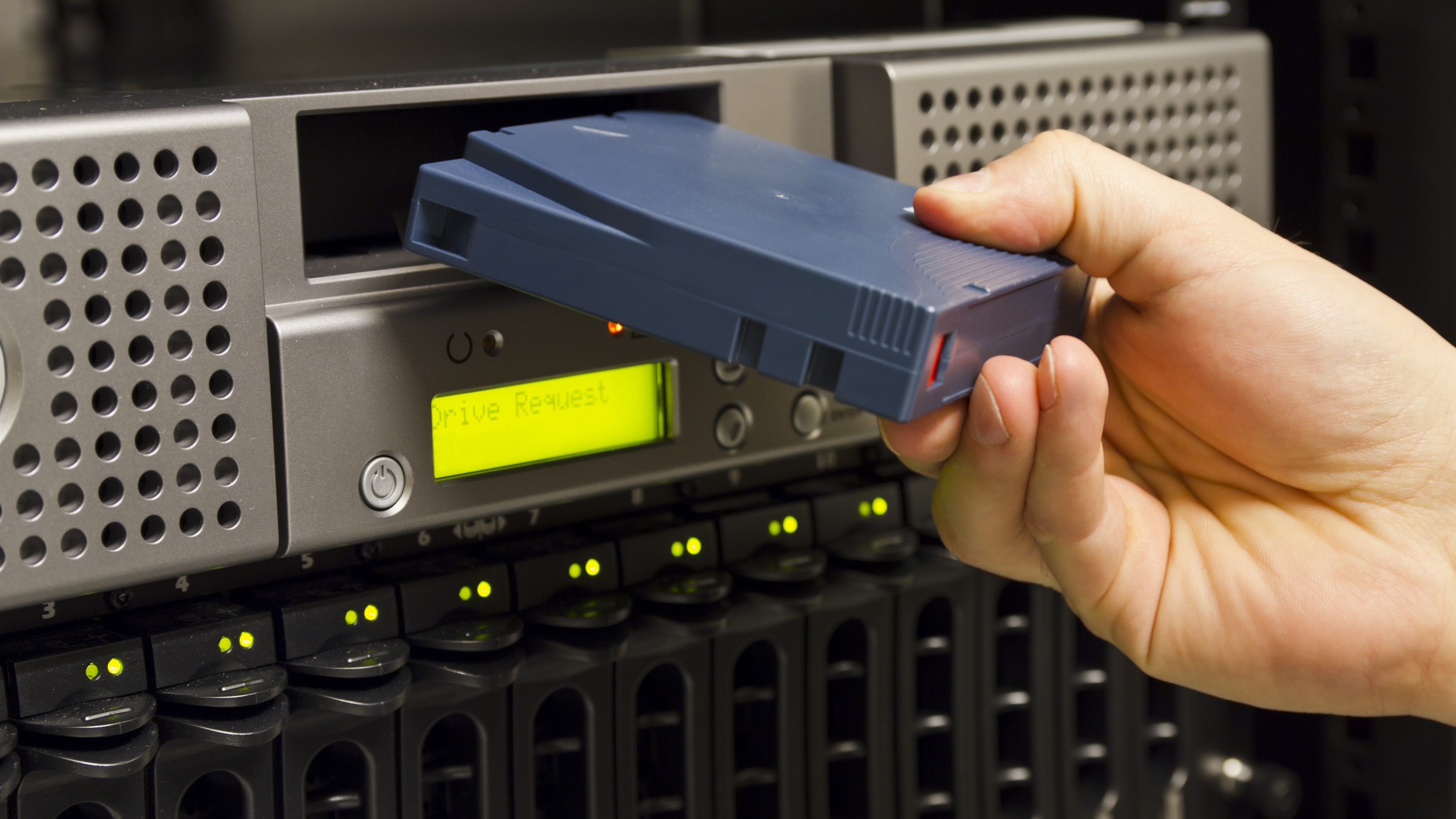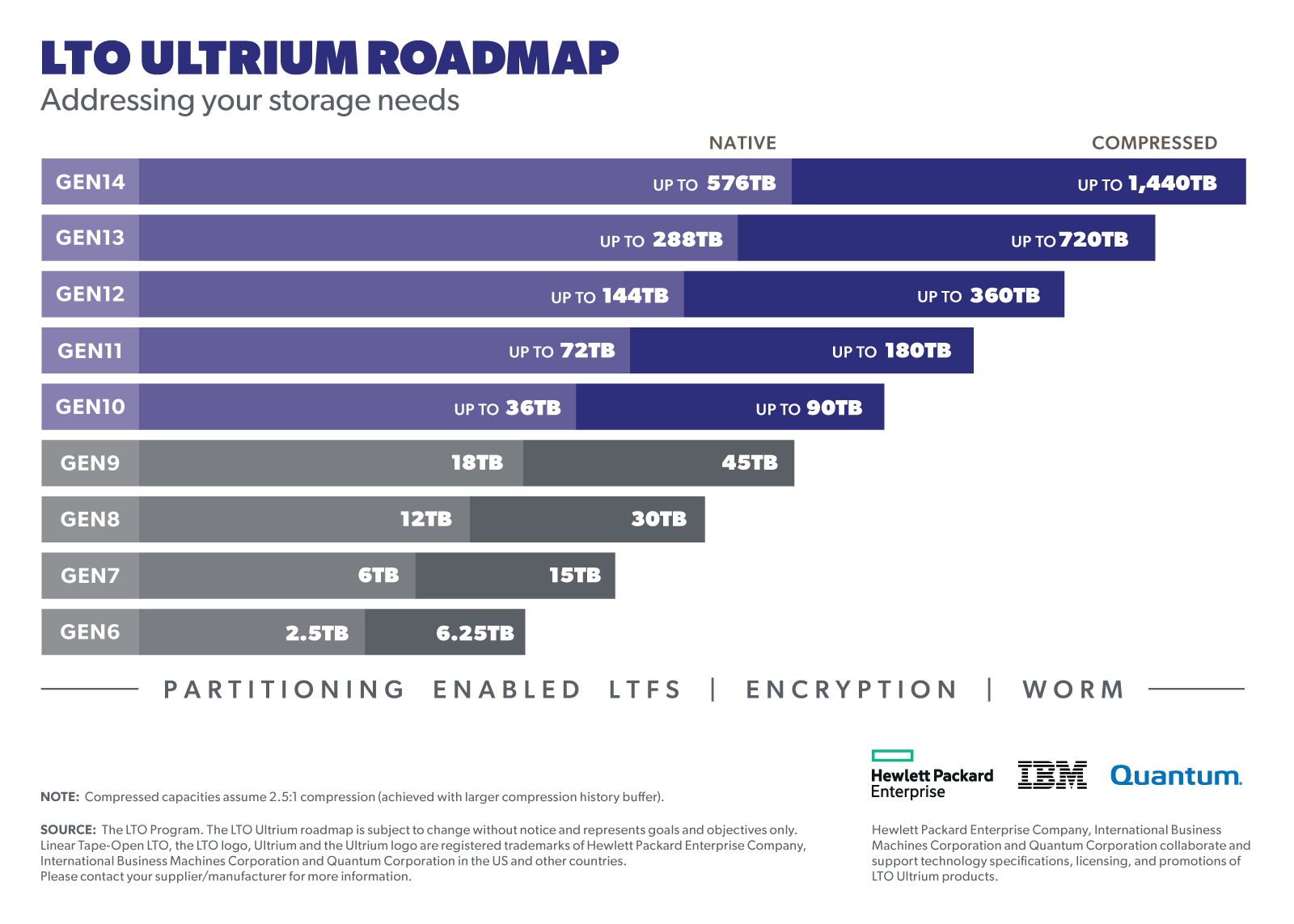U.S. Gov't eliminates tape data storage at the GSA to save $1M per year, but tape isn't dead yet
But the triumphant social media post gets a Community Note.

A Department of Government Efficiency (DOGE) social media post boasts of the elimination of tape data storage facilities at the U.S. General Services Administration (GSE). A triumphant Tweet by DOGE says that a million dollars per year will be saved “by converting 14,000 magnetic tapes (70 yr old technology for information storage) to permanent modern digital records.” However, many X users, and a Community Notes addition, highlight that despite its apparent elderliness, tape still remains the best choice in a range of data storage scenarios.
The @USGSA IT team just saved $1M per year by converting 14,000 magnetic tapes (70 yr old technology for information storage) to permanent modern digital records.April 4, 2025
Hopefully, no official installed at DOGE or GSA assumed that because magnetic tape has been around for such a long time, it is outdated and, therefore, a prime target for replacement with new and improved storage tech. Recently, we reported that the tech behind tape storage, the Linear Tape-Open (LTO) standard, carries on with a robust development roadmap that continues to deliver higher densities.
Tape storage devices are constantly being refreshed with new interfaces, like the new Thunderbolt 5 models announced last month. Media manufacturers also enjoy continued growth driven by trendsetting AI hyperscalers, and companies like Huawei are developing entirely new storage subsystems built around tape storage. A year earlier, we reported on research that claimed tape storage remained cheaper and less polluting than HDDs or SSDs.
As with many choices in tech, be it a decision about your display, processor, or GPU, there remains a diverse choice in storage media because one size doesn’t fit all. Though we have fingernail-sized micro-SD cards that can store 1TB now and consumer SSDs that can transfer data at over 14 GB/s, older magnetic storage media like HDDs and tape remain on the menu. That’s because they still have particular strengths or a sweet spot balance of features.
Tape will live on for "decades"
In the case of the 14,000 magnetic tapes that have been consigned to history by the government, Community Notes attached to the DOGE post reference articles about why tape is still popular for backups in organizations of all sizes and will still be around for “decades to come.” In brief, tape storage remains in favor for multiple reasons, but most importantly due to the format’s huge capacity, long-term development roadmap that continues to evolve, known durability (30 years estimated), low energy consumption, TCO, and suitability for cold storage.
It would be very interesting to know what storage system and media have been selected to replace the GSA’s tape system, but we don't have these details to hand. We also wonder whether the DOGE-celebrated $1M per year change away from tape will stick.
Get Tom's Hardware's best news and in-depth reviews, straight to your inbox.

Mark Tyson is a news editor at Tom's Hardware. He enjoys covering the full breadth of PC tech; from business and semiconductor design to products approaching the edge of reason.
-
Kindaian Hmmm... 1m per year... that's like what?Reply
How many terabytes are we talking about? How is the data accessed / frequency / backup processes etc?
Without knowing that, the number is completely irrelevant. Never mind that be absolutely peanuts in terms of the USA budget! Actually less than one peanut kernel! -
derekullo "Though we have fingernail-sized micro-SD cards that can store 1TB now and consumer SSDs that can transfer data at over 14 MB/s"Reply
You are technically correct!
The best kind of correct! -
kanewolf 70,000 tapes is probably a few petabytes of data. It is possible it is 1/2 the worst case amount if the storage software was configured to write two copies to separate volumes. That data has specific retention requirements. Typically 5 years after end of contract for US Govt, but some may have "forever" requirements. That data has to go somewhere. So lets assume that cloud storage is the answer. The cost to transfer several petabytes of data to AWS (or Oracle) is non-trivial in terms of hardware and labor. That data then has a continuing retention cost.Reply
I have worked with large (10,000 volume) tape archives. The costs for that amount of data is quite small. I definitely don't believe the savings number on this one. -
jeremyj_83 In terms of per TB of storage, you cannot get cheaper than tape. An LTO-8 tape costs about $65/tape and is even cheaper when bought in large batches. Not to mention that a tape library/changer plus drives is cheap and lasts for years. What does DOGE think is going to replace tape? Are they going to buy storage on Amazon S3 because that is going to be VERY expensive. Not to mention all the other issues with putting that information into the cloud.Reply -
ravewulf Elon has always been a wrecking ball, destroying existing systems without understanding them until the point that they break and then someone has to clean up the messReply -
eichwana Likely it’ll be stored on some kind of twitter cloud storage costing millions a year. Good luck uploading those backups then attempting to restore themReply -
jeremyj_83 Reply
My guess is this is information that needs to be archived for at least 7 years. Therefore it is at best reference materials so access will be quite infrequent. AWS Glacier Deep Archive storage is about $1/TB so even without any compression for LTO-8 tapes that means $144/tape required for S3 Glacier Deep Archive. At most a single LTO-8 tape costs $65/tape and obviously buying multiple tapes you get a discount. IF this is as I expect that the tapes will be used for archiving that means at $65/tape you can get over 15k tapes a year for 180PB storage. At $144/year/TB for Glacier you would be spending $25M/year for that in AWS instead. Sounds more like DOGE is going to cost them money than save them money.Kindaian said:Hmmm... 1m per year... that's like what?
How many terabytes are we talking about? How is the data accessed / frequency / backup processes etc?
Without knowing that, the number is completely irrelevant. Never mind that be absolutely peanuts in terms of the USA budget! Actually less than one peanut kernel! -
jeremyj_83 Reply
The cheapest storage for AWS is $1/TB/month. Tape is A LOT cheaper than that and don't have yearly costs associated with them outside of a place to keep the tapes.kanewolf said:70,000 tapes is probably a few petabytes of data. It is possible it is 1/2 the worst case amount if the storage software was configured to write two copies to separate volumes. That data has specific retention requirements. Typically 5 years after end of contract for US Govt, but some may have "forever" requirements. That data has to go somewhere. So lets assume that cloud storage is the answer. The cost to transfer several petabytes of data to AWS (or Oracle) is non-trivial in terms of hardware and labor. That data then has a continuing retention cost.
I have worked with large (10,000 volume) tape archives. The costs for that amount of data is quite small. I definitely don't believe the savings number on this one. -
jeremyj_83 Reply
The retrieval costs would be INSANE.eichwana said:Likely it’ll be stored on some kind of twitter cloud storage costing millions a year. Good luck uploading those backups then attempting to restore them -
DS426 Reply
Yep, and it has resulted in great success. Sometimes it takes people "breaking the mold." It's certainly too risky and unpredictable for how I operate in life, but it works for some people. Breaking something can be a great way to understand it and improve it. Of course, it goes without saying that some things just shouldn't be broken -- it should be a more evolutionary process rather than revolutionary.ravewulf said:Elon has always been a wrecking ball, destroying existing systems without understanding them until the point that they break and then someone has to clean up the mess
Digressing, I wonder if the savings has more to do with the tape system literally being older, i.e. a system that isn't based on the more recent LTO standards, resulting in an excessive amount of tapes (along with lower write speeds as well). As the article author mentioned, hopefully it's not that that DOGE kid has this mentality that tape storage is so dinosaur age and therefore automatically irrelevant.

